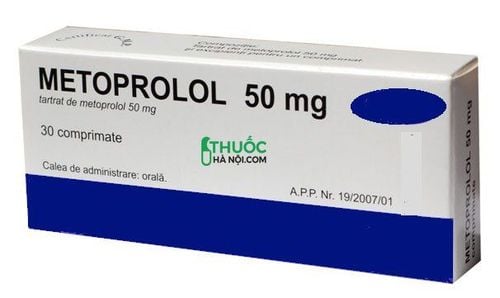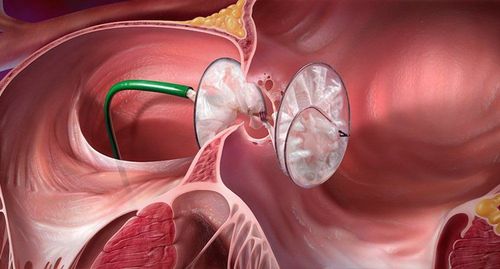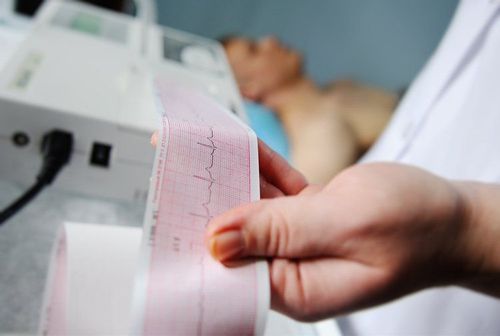This is an automatically translated article.
The article is professionally consulted by Specialist Doctor I Tran Quoc Vinh - Emergency Doctor - Department of Resuscitation - Emergency - Vinmec Nha Trang International General Hospital.The atrium is the upper chamber of the heart, which is the place through which blood enters the ventricles. The human heart has two atria, the left atrium receives blood from the pulmonary circulation and the right atrium receives blood from the venous circulation. The atria perform three different functions during a cardiac cycle: as the receiving chamber during systole, passively pumping blood into the ventricles during early diastole, and intensively pumping during late diastole.
1. Pathologies of the Atrium
1.1 Atrial fibrillation Atrial fibrillation is a common heart rhythm disorder that occurs when electrical impulses originate disorganizedly from different locations in the atria (the upper chambers of the heart), causing the heart to malfunction. Atrial fibrillation is always in a state of fibrillation rather than rhythmic and synchronous contraction, manifested by an irregular heartbeat or pulse. Atrial fibrillation is the main cause of stroke.What are the symptoms of atrial fibrillation? Symptoms include:
Palpitations Fatigue Shortness of breath, shortness of breath Dizziness or lightheadedness An irregular pulse could be a sign you have atrial fibrillation. However, some people have only mild symptoms, while others experience no symptoms at all.
Diagnostic method of atrial fibrillation Atrial fibrillation can be detected by taking a pulse at the wrist. If you have atrial fibrillation, you will have an irregular pulse in frequency. You can also feel the same condition when you lose your pulse or have an early pulse, these arrhythmias are very common and usually shouldn't be worried about. Some people have paroxysmal episodes of atrial fibrillation (which comes and goes on its own), sometimes they experience a normal pulse and other times an irregular pulse. To make a definitive diagnosis, you need to have an electrocardiogram, 24-hour ECG monitoring, echocardiography and tests to determine the cause.
1.2 Atrial Extrasystoles Atrial systole is a condition in which the heart beats earlier than normal due to abnormal electrical signals emitted from different locations of the atria (upper chambers of the heart).
Atrial extrasystoles can occur in healthy individuals and are rarely symptomatic.
Atrial extrasystoles are common in people with lung disease (such as chronic obstructive pulmonary disease) and in the elderly. This arrhythmia may appear or worsen with coffee, tea and alcohol consumption, or with chills, fever, and bronchial asthma.
Trắc nghiệm: Huyết áp của bạn có đang thực sự tốt?
Huyết áp cao hay thấp đều ảnh hưởng đến tình trạng sức khỏe con người. Để biết tình trạng huyết áp của bạn có thực sự tốt không, hãy làm bài trắc nghiệm sau đây để đánh giá.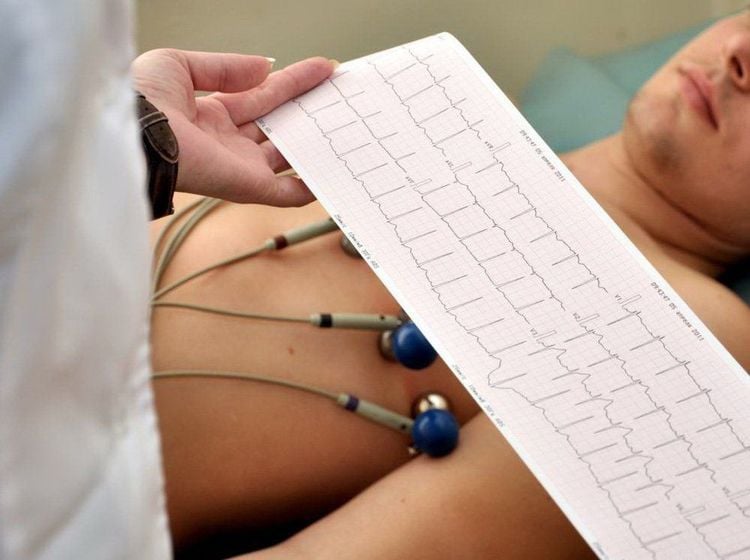
Atrial extrasystoles can be detected by physical examination and electrocardiography.
Treatment Rarely, an antiarrhythmic drug is needed, unless atrial ventricular extrasystoles occur frequently and the patient cannot tolerate palpitations. Antiarrhythmic drugs are often effective. The patient should also treat the cause of the atrial extrasystoles (if any) because prevention is always better than cure.
1.3 Atrial septal defect An atrial septal defect is a condition in which a hole exists in the atrial septum (the wall that divides the 2 atria). This is a congenital heart disease.
Small atrial septal defects do not cause symptoms and are often discovered incidentally. A small atrial septal defect may close on its own during the early years as a child grows.
Large and prolonged atrial septal defect can cause damage to the heart and lungs. An adult can have an atrial septal defect undetected for years until symptoms of heart failure and pulmonary hypertension develop. Surgical closure of the atrial septal defect is a necessary treatment to prevent complications.
Symptoms Many babies are born with an atrial septal defect without any signs or symptoms. In adults, symptoms usually appear around the age of 30, but some people don't have symptoms until years later.
Signs and symptoms of an atrial septal defect include:
Rapid breathing, especially during exercise. Tired. Swelling of the legs, feet or abdomen. Palpitations or feeling your heart pounding. Stroke. Intermittent heart murmur was detected on stethoscope examination. See your doctor when you or your child have the following signs or symptoms:
Shortness of breath, difficulty breathing. Get tired quickly, especially after exercise. Swelling of the legs, feet or abdomen. Palpitations or heart palpitations. These are signs/symptoms of heart failure or other complications of congenital heart disease.
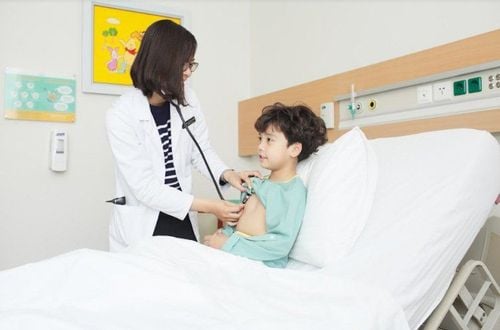
2. Risk factors
The cause of atrial septal defect is unknown, but congenital heart defects seem to run in families and sometimes to genetic disorders such as Down syndrome. If you or your child has had congenital heart disease, a genetics consultant can estimate the next generation's odds of having congenital heart disease.Certain conditions that a patient has or occurs during pregnancy can increase the risk of having a baby with a congenital heart disease, including:
Rubella infection : the mother has been infected with Rubella (German measles) in the past few weeks. The first month of pregnancy increases the risk of congenital heart disease in the fetus. Use or exposure to drugs, tobacco, and alcohol during pregnancy. Diabetes or lupus. Fat. Being overweight can increase the risk of having a baby with congenital heart disease. Phenylketouria is a rare genetic condition caused by an excessive accumulation of the amino acid phenylalanine in the body. If the patient has Phenylketouria but does not adhere to the diet, the risk of giving birth to a child with congenital heart disease will be very high.
3. Prevention of atrial disease
Atrial septal defect cannot be prevented in most cases. If you are planning to become pregnant, your healthcare provider will provide you with a schedule of pre-pregnancy visits. Includes:Immunoassay for Rubella. If you are not immune, you should ask for the Rubella vaccine. Regularly check your health status and medication use. Busy need to carefully monitor health problems during pregnancy. Your doctor will also recommend adjusting or stopping some medications before you get pregnant. Review family medical history. If you have a family history of congenital heart disease or other genetic disorders, you should talk to a genetic counselor about your potential risk before deciding to get pregnant. Vinmec International General Hospital is one of the hospitals that not only ensures professional quality with a team of leading doctors, modern equipment and technology, but also stands out for its examination and consulting services. and comprehensive, professional medical treatment; civilized, polite, safe and sterile medical examination and treatment space.
Doctor Tran Quoc Vinh has more than 6 years of working experience (starting in 2011) in the field of Emergency Medicine, he used to work at the Emergency Department of Khanh Hoa Provincial General Hospital, participated in medical examination and treatment. for many clinics in Nha Trang area before becoming a doctor of emergency department at Vinmec Nha Trang International General Hospital as it is today.
Please dial HOTLINE for more information or register for an appointment HERE. Download MyVinmec app to make appointments faster and to manage your bookings easily.
Articles source references: webmd.com, ncbi.nlm.nih.gov, mayoclinic.org




